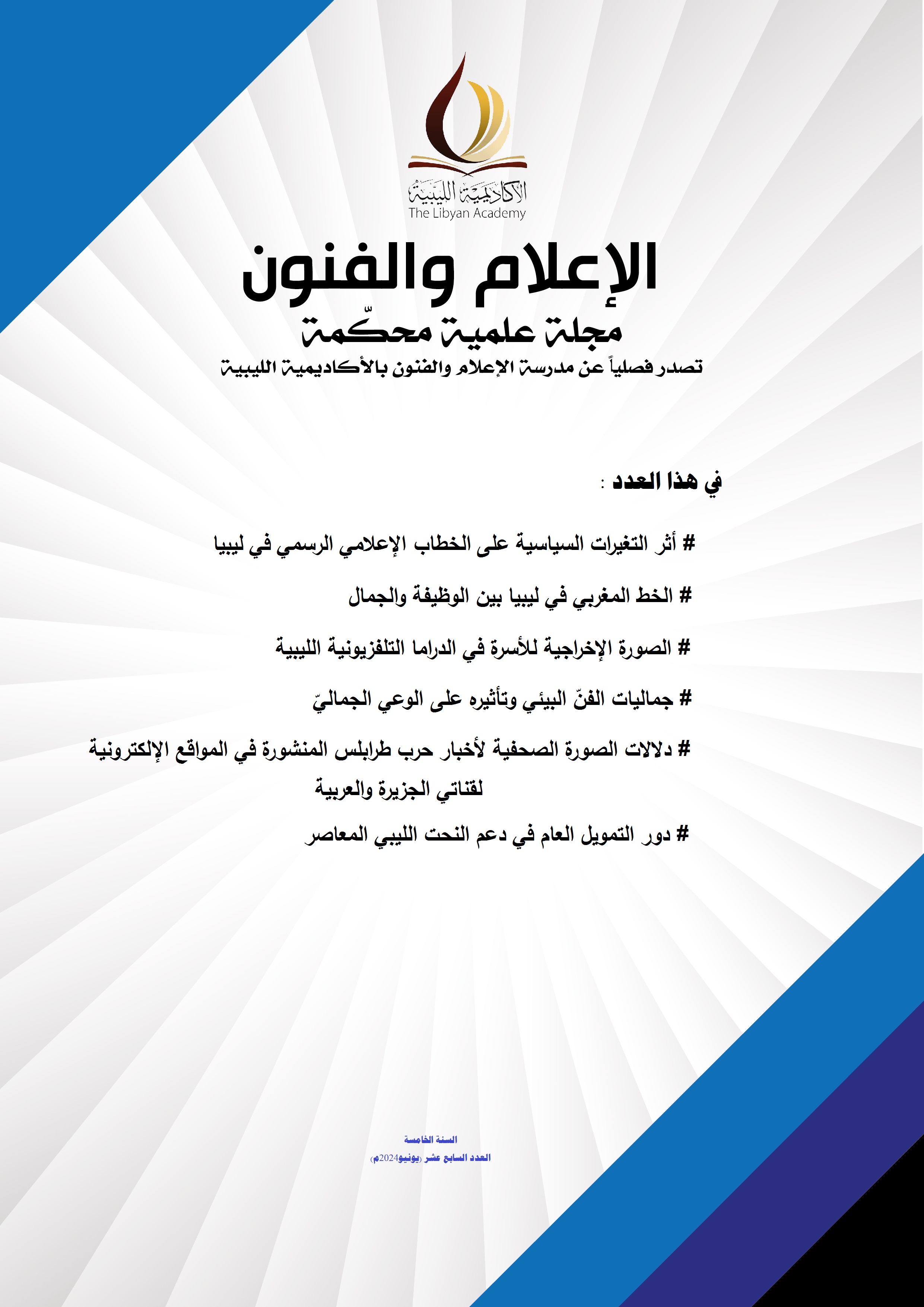الفن البيئي ودوره في تنمية الثقافة البصرية
Main Article Content
Abstract
Abstract:
This research presents an aspect of the philosophical vision ofenvironmental art and its role in developing visual culture from anumber of aspects, so that it makes it clear that environmental artaims to experiment with nature’s tools and communicate with nature
to restore vital connections and rehabilitate and organize naturalecosystems.
The research included a methodological framework that began withthe research problem, which is “environmental art and its role indeveloping visual culture,” an analytical study.
The researcher put the following question: What is the relationshipbetween environmental art and visual culture?
The researcher formulated the following hypothesis: Environmentalarts help in developing visual culture within societies through the use
of irregularities and natural materials embodied by artists?
To define the importance of the research, the researcher mentioned aset of points that contribute to the development of visual taste, which inturn establishes a relationship that develops visual culture. He set thegoals, which are to know the relationship between environmental artand visual culture. From here, the researcher began selecting researchsamples within the framework of its objective - spatial – temporalboundaries. The researcher identified the descriptive analyticalmethod (content analysis method) as the method followed for studyingthe research and moved on to the research terms, specifying the mostimportant ones related to the research topic. The researcher touched
on previous studies of direct importance to the research topic,indicating the areas of benefit from this study. The researcher movedto the theoretical framework and its indicators, where the researcheraddressed In a simplified narrative form.
From there, the researcher moved on to the research procedures,where he took three intentional samples from works bearing thespecifications of environmental art and analyzed the samples according to the Edmund Feldman method, which is similar to
description - formal analysis - interpretation.
The study concluded the following results:It became clear to the researcher, through the analysis of the artworksand the materials used in every literal way, that environmental art hasan important role in developing visual culture.
- It became clear to the researcher that there is a correlation betweenenvironmental art and visual culture through the use of the remains ofviolations and the artistic treatment methods of some artistsThis research is a work that provides an analysis of artistic ideas thatare rich in aesthetic values and enrich the visual culture of the viewer.It is an artistic contribution that keeps pace with the scientific method.
- Educating the viewer about the importance of environmental art ingeneral and visual taste in particular, and learning about theimportance of environmental art.
Key words: Arts – Environment – Visual Culture

